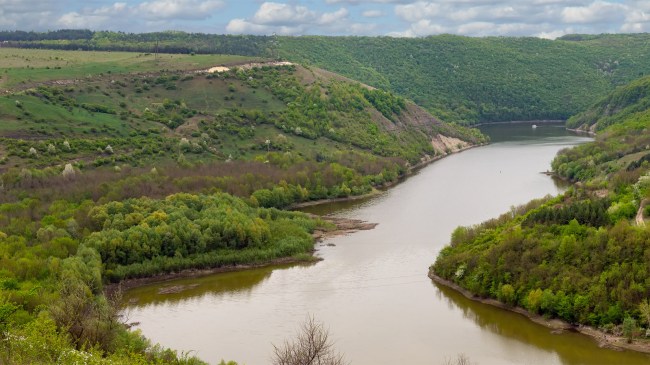iStockphoto
Prototaxites, the first giant organism to live on land, have long been thought to have been some sort of plant, fungus or algae. Now, a new research paper suggests that they may have actually been a previously unknown life-form.
Prototaxites were the largest land-dwelling organism of their time – 375 million to 420 million years ago during the Devonian period. They were made up of interwoven tubes that were around 0.0020 inches in diameter, had large trunks that were up three-feet wide, and were up to 26 feet in length.
First discovered in 1843, Prototaxites have been the subject of much debate in the scientific community. In 2007, scientists concluded from the carbon isotopes in the fossils of Prototaxites that they were some kind of fungus.
Now, another group of scientists claim that Prototaxites weren’t a fungus, but something else entirely. And by something else entirely, they mean they were fungi, plants, animals or protists, but some other kind of unknown life-form.
“We report that Prototaxites taiti was the largest organism in the Rhynie ecosystem and its anatomy was fundamentally distinct from all known extant or extinct fungi,” the scientists wrote in their paper published on the preprint server bioRxiv. “We therefore conclude that Prototaxites was not a fungus, and instead propose it is best assigned to a now entirely extinct terrestrial lineage.”
Not only that, they wrote, “We conclude that the morphology and molecular fingerprint of [a Prototaxites species named Prototaxites taiti] is clearly distinct from that of the fungi and other organism preserved alongside it in the Rhynie chert, and we suggest that it is best considered a member of a previously undescribed, entirely extinct group of eukaryotes.”
In conclusion, the scientists wrote, “We suggest that it is best considered a member of a previously undescribed, entirely extinct group of eukaryotes.”
So, what does that all mean?
“The assumption that it was likely to be in the fungi was somewhat nebulous, particularly given the nature of the fossils, and seemed somewhat counterintuitive given the relatively massive size,” Brett Summerell at the Botanic Gardens of Sydney, Australia, told New Scientist. “The conclusion that it is a completely unknown eukaryote certainly creates an air of mystery and intrigue around it – probably not likely to be solved until more fossils are discovered or new analytical techniques developed.”
Content shared from brobible.com.

